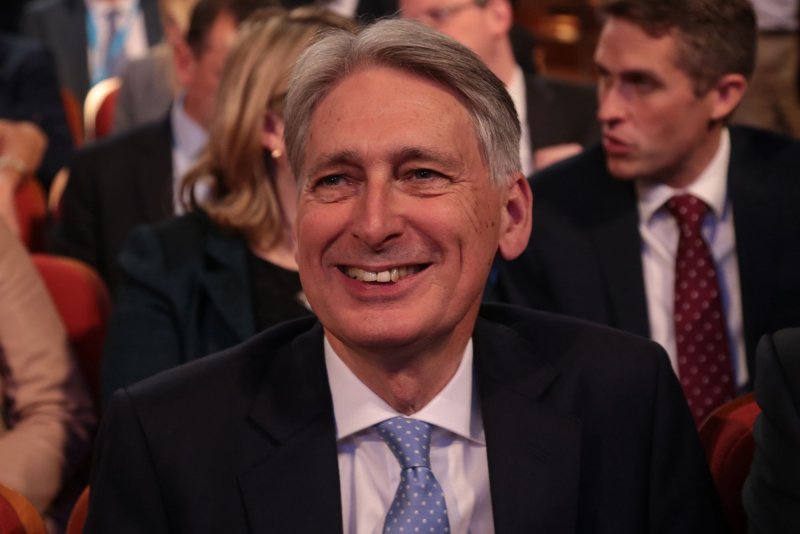British Chancellor of the Exchequer Philip Hammond on Tuesday approved a budget increase for the U.K. Ministry of Defense, though other leaders noted it fell short of the department's request. Photo by Hugo Philpott/UPI |
License Photo
Oct. 30 (UPI) -- The U.K. Ministry of Defense received a $1.3 billion budget increase for cyber security, anti-submarine warfare and the Dreadnought nuclear submarine build programs.
This funding increase, which Philip Hammond, British chancellor of the exchequer, said will be available in the next few months, comes after a $1.2 billion bump in defense spending over the summer.
"As a former defense secretary myself, I understand the immediate pressure our armed forces are facing, so today I will provide $1.3 billion to cover the remainder of this year and next to boost our cyber, and anti-submarine warfare capacity and to maintain the pace of the Dreadnought program," Hammond told Parliament.
The news follows tug of war between Defense Secretary Gavin Williamson and Hammond to increase defense spending.
This number still falls short of what Williamson expected. The U.K. puts more money into defense spending than all other NATO members except the United States.
In May, Williamson told the Parliamentary defense committee that the U.K. benefits "massively from our relationship with the U.S. I said you couldn't actually put a price on it, but when you look at [it] in terms of the benefits we get on a yearly basis, I think we would benefit to the tune of a very minimum of $3.9 billion, and that is taking a very conservative approach."
One defense expert said that the increase is better than what was expected, but the commitment lacks what the defense ministry requires to fill budget holes.
"It's welcome, but comes nowhere near addressing the potential funding gap if you add up all the programs in the equipment plan," Jon Louth, the director for defense, industry and society at the Royal United Services, a British think tank, told Defense News. "It does appear to be a significant increase in percentage terms, although the devil will be in the detail."
The Ministry of Defense still needs to fund its $230 billion, 10-year equipment plan, which has budget gaps between $5 billion and $25 billion.
While the defense secretary calls the increase a "drop in the ocean" compared to the $25 billion he requested in June, he called it a "substantial financial boost."
"Not only will this funding ensure we continue to have world-leading armed forces but will also allow defense to modernize our critical assets, such as our offensive cyber capabilities, anti-submarine warfare and our nuclear deterrent," Williamson said.
"The Modernizing Defense Program is increasingly tied into the comprehensive spending review and the 10-year equipment plan in 2019. We might get a whitepaper in late winter or early spring to set up some of the themes but the details won't be out until beyond April," said Louth.















